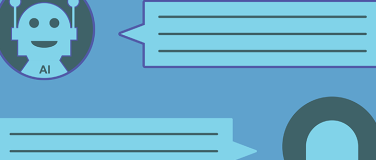You say Salesforce and SAP can’t be combined out-of-the box? That’s why there are PwC Connected Journeys.
Companies often panic when trying to have a smooth order-to-cash process between their customer relationship management (CRM) and enterprise resource planning (ERP) software. But panic no more – SAP S/4HANA and Salesforce are combined for a new digital platform ecosystem to connect the entire lead-to-cash-to-care process.
These two different interfaces are directed to each other but do not work together the way we want them to. Is building a custom integration the only way out of this?
Why ERP and CRM have to work together for digital
The ERP system manages the order fulfillment (i.e. human resources, finance, procurement and logistics), while the CRM covers all the engagements and relationships with customers. Both systems work on their own with key client information, e.g. customers, contacts, transaction, in each system.
The MuleSoft Anypoint platform connects the dots between these two worlds. APIs and connectors are designed and built as part of a loosely coupled integration architecture as a best practice. But a business relevant canonical data model has to be added for standardization and flexibility.
Why ERP and CRM are often hard to integrate
Both systems, Salesforce CRM and SAP S4/HANA come with a set of standards: out-of-the box, out of the cloud, ready to run. These standards provide pre-designed business functionality with industry focus. An application layer provides several options for customization, no-code to low-code automation, and programmatic enhancements. This is what customers do when introducing such a system: they adapt and improve it to their needs. Now, these systems need to talk to each other and questions around a joint customer structure or a complex order fulfillment process arise.
Why connected journeys “win” in a digital age
One primary and differentiator of the digital age is to attract customers with a coherent experience. There are customers willing to pay more money to brands they identify with. And a convincing, attractive and seamless user experience is crucial to this. This requires business processes designed end-to-end over the full lifecycle of their products and services.
The consequence from a technology perspective is that all involved ecosystems have to be integrated to deliver the seamless experience. Each technology of the CRM and the ERP adds and consumes pieces of digital capabilities for end-to-end experience of customers and employees.
Connecting Salesforce and SAP is a great base to achieve convenient engagement as a base for end-to-end lead-to-cash-to-care processes. The customer and the employees will be thrilled to recognize they are served personally and with full awareness of relevant data like order, status, sales history, service history, and likes and dislikes.
Why leverage out-of-the-box connected journeys?
There is half of the efforts needed to introduce the interface integration over the existing canonical data model. Time-to-market cut off twice or even three times due to configurable setup. Hence, more projects backbone endpoints at the same time, even if it will be necessary to prepare everything from scratch. By using the Connected Journey Suite, projects will be easier and with lower possibility to be very challenging, based on the productive code and existing mappings. The project entrance level decreased to minimum, once the developer was introduced to Connected Journey is set up and training is done.
Salesforce CRM with SAP S/4HANA ERP integration
In fact, the integration of the CRM with the ERP system is not as easy as it sounds. PwC has created an out-of-the-box solution that is tested and solves clients’ problems. Even if SAP S/4HANA or Salesforce is updated or MuleSoft runtime changes, the Connected Journey Suite of PwC is always up to date.
Care to learn more? Find out more about harmonizing the processes of Salesforce and S/4HANA today.









